Finding the Main Angles
Finding the main angles in a composition might seem like a bit of a mystery. But I think there are cues to be found in the work, really a kind of notation, often in the form of a small object that references the angles. This Claude is an interesting example. The woman playing the violin in the foreground references the main diagonal structure. Just as often it might be a stick, or ditch by the side of the road, think Constable, but here Claude Lorraine has given us a pretty clear decoder. Here is the drawing:
Here is a close up image of our violinist with the main angles indicated by the violin and bow. I added a third that connects foot hand and the angle of her head.
These angles repeated through the composition are very powerful. But first here is the geometry of the rectangle. Claude did a lot of landscape drawing and all together the drawings are a cookbook of composition. One of the things I have noticed generally about his compositions is the tendency to make at least one of his diagonals follow fairly closely to the rectangles geometry.
The drawing below extends out the violinists angles to form a rather beautiful triangle. the red marks indicate the intersections. I also played around a bit with the two point perspective in the background and tried to find the vanishing points, just for fun.
And here is the drawing with both the rectangle geometry and the “violinist geometry” and the bit of perspective put it all together and you have a pretty complex and beautifully unified composition.
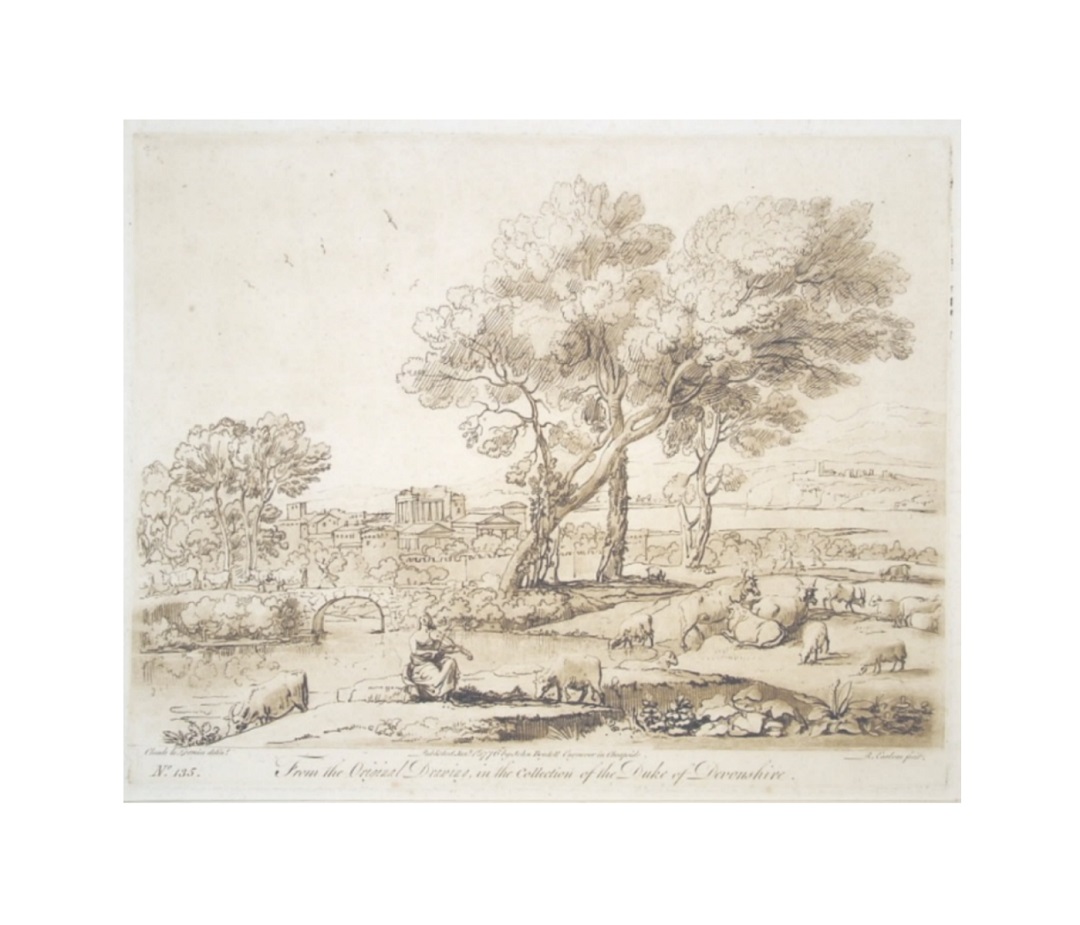
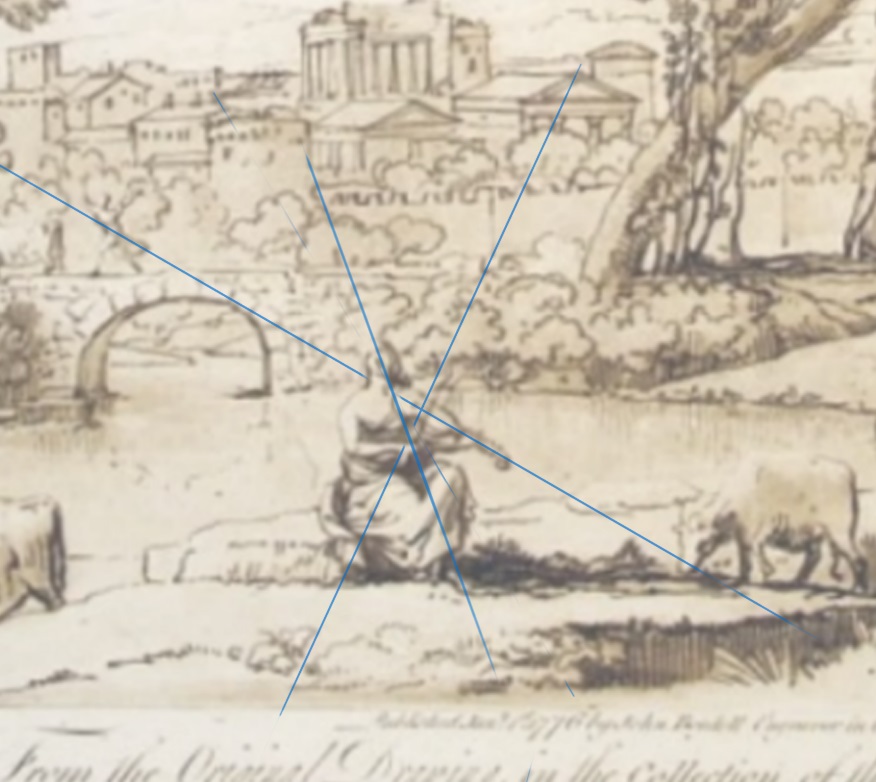
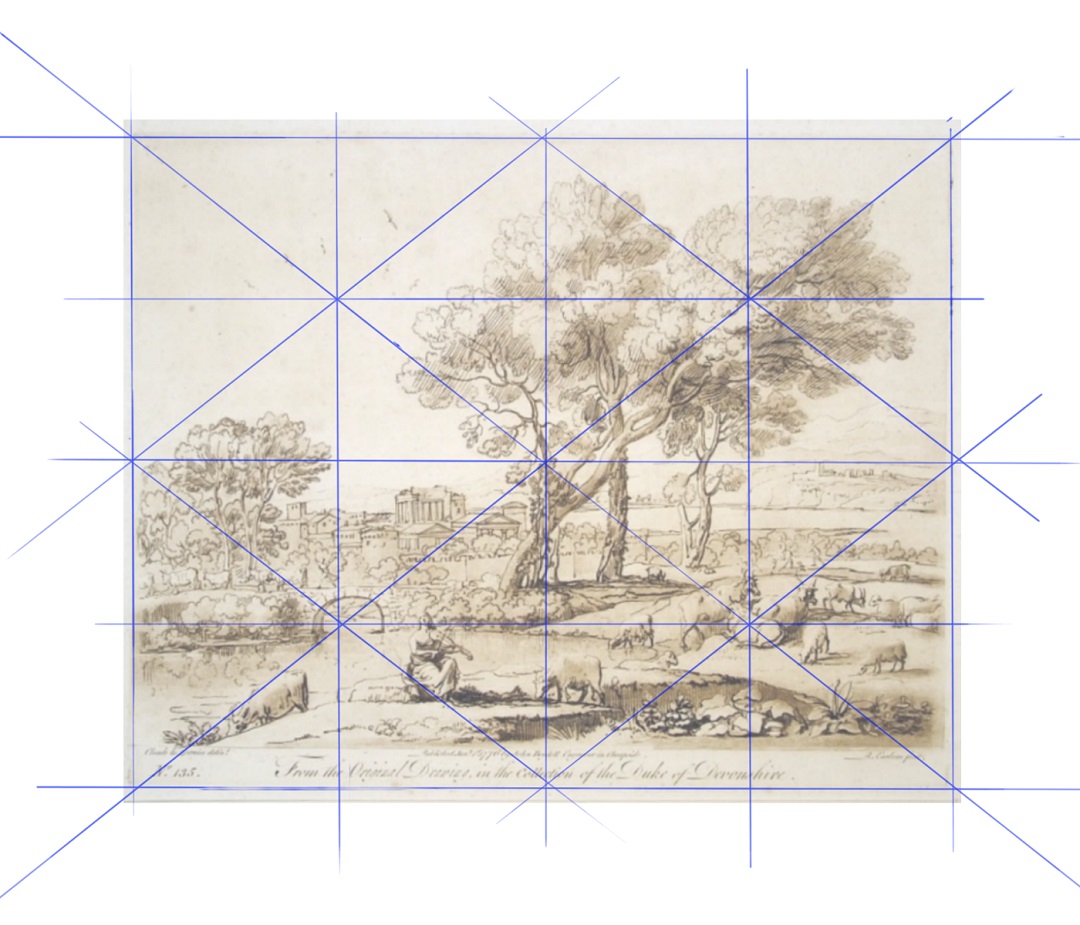
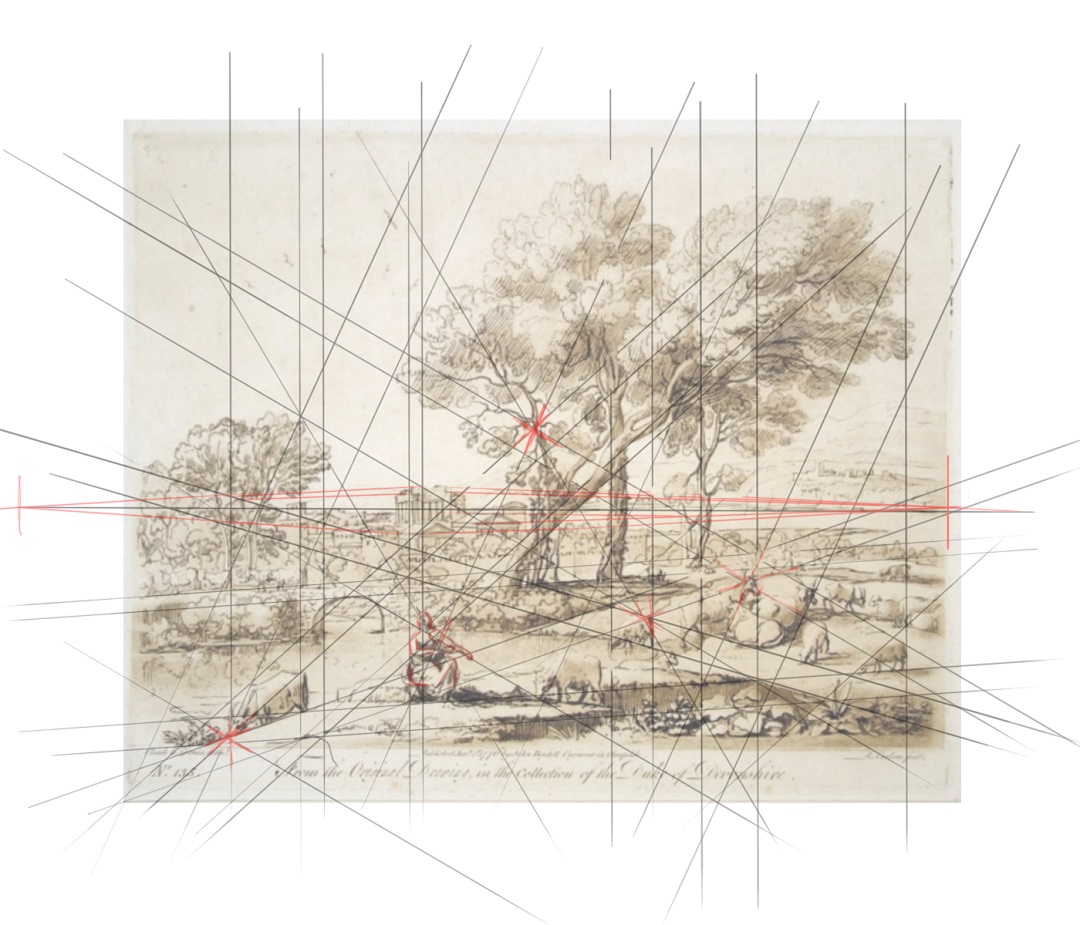
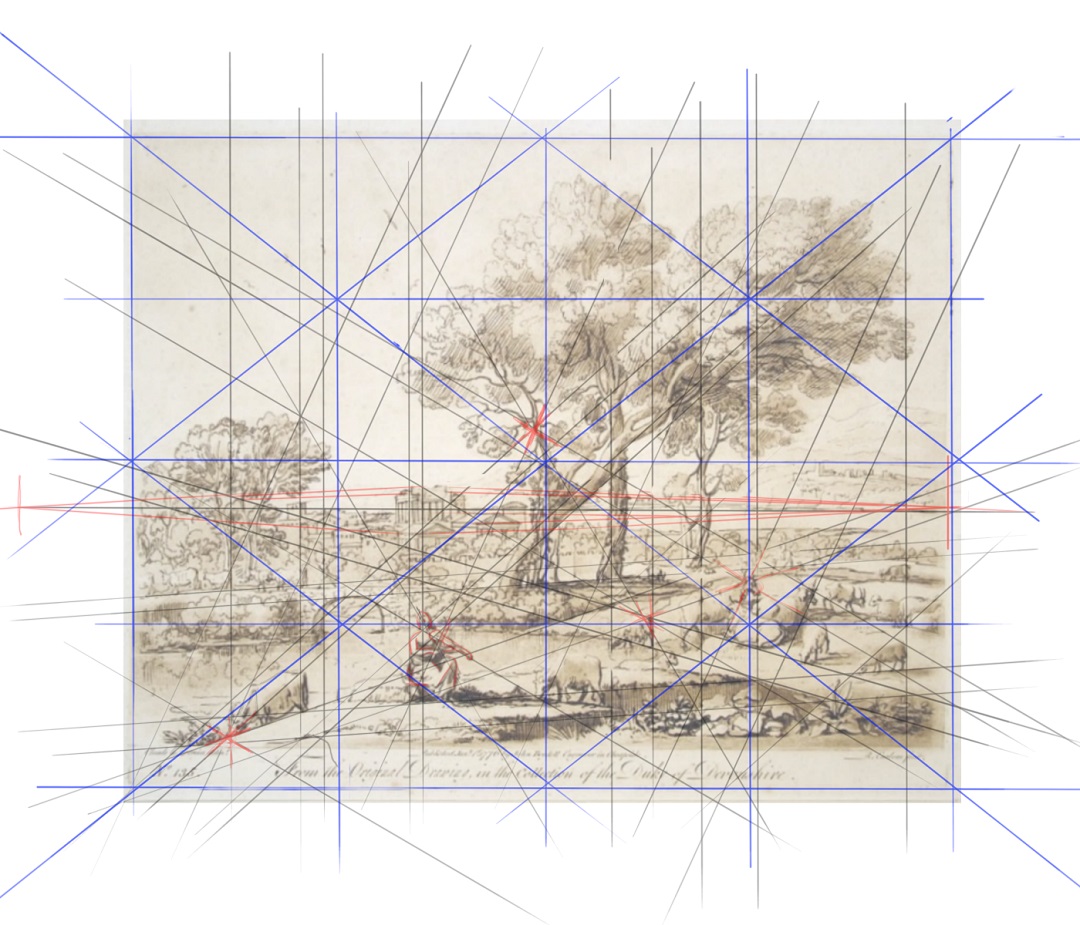
Leave a Reply